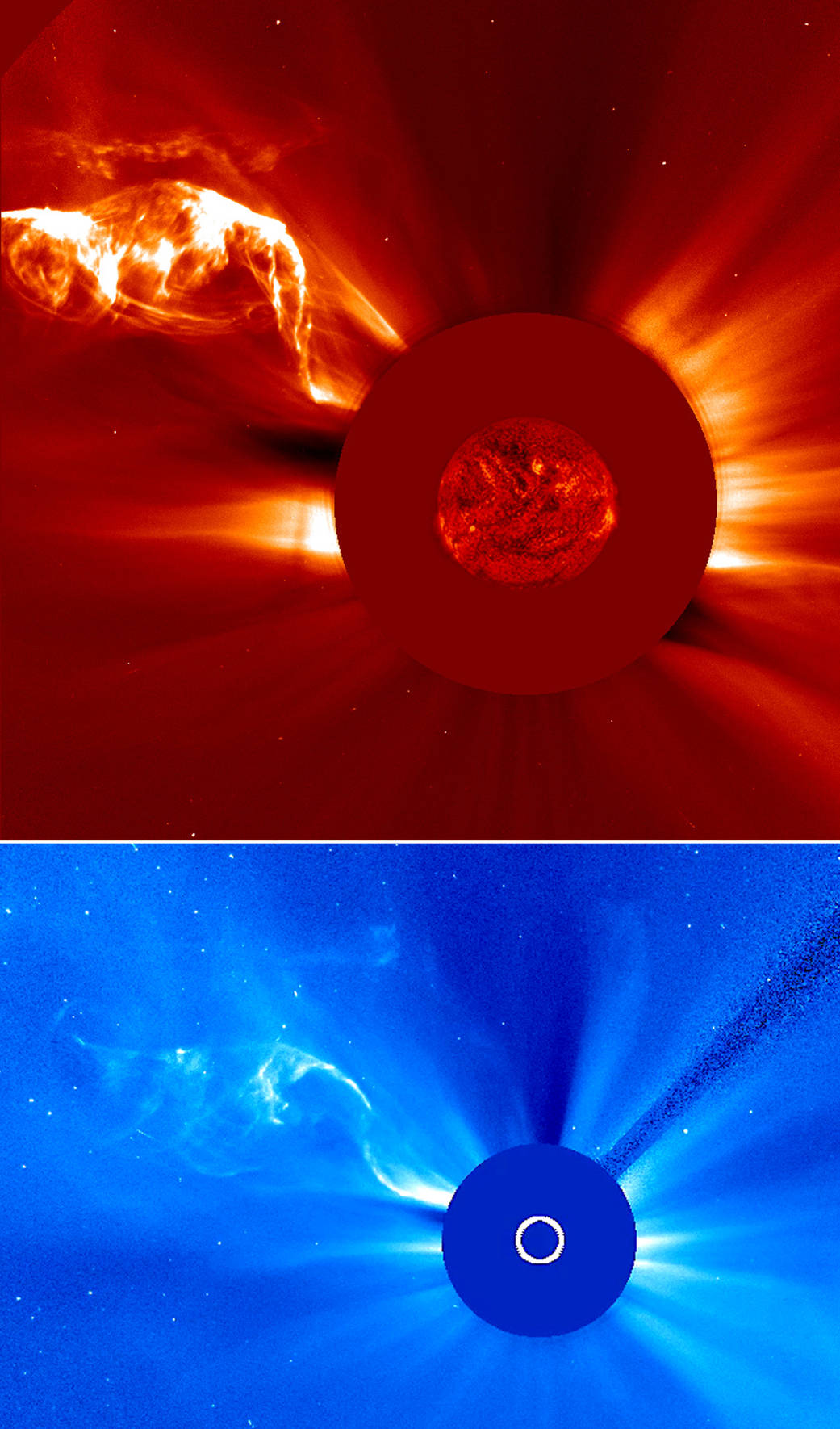An elongated solar filament that extended almost half the sun’s visible hemisphere erupted into space on April 28-29, 2015, in a large burst of bright plasma. Filaments are unstable strands of solar material suspended above the sun by magnetic forces. Solar astronomers around the world had their eyes on this unusually large filament and kept track as it erupted. Both of the coronagraph instruments on the joint ESA/NASA Solar and Heliospheric Observatory, or SOHO, show the coronal mass ejection associated with the eruption.
The top image was taken by SOHO’s LASCO C2 coronagraph and the bottom by LASCO C3.
LASCO, which stands for Large Angle Spectrometric Coronagraph, is able to take images of the solar corona by blocking the light coming directly from the Sun with an occulter disk, creating an artificial eclipse within the instrument itself. C2 images show the inner solar corona up to 8.4 million kilometers (5.25 million miles) away from the Sun. C3 images have a larger field of view: They encompass 32 diameters of the Sun. To put this in perspective, the diameter of the images is 45 million kilometers (about 30 million miles) at the distance of the Sun, or half of the diameter of the orbit of Mercury. The white circle in the center of the round disk represents the size of the sun, which is being blocked by the telescope in order to see the fainter material around it.
Credit: ESA/NASA/SOHO



























